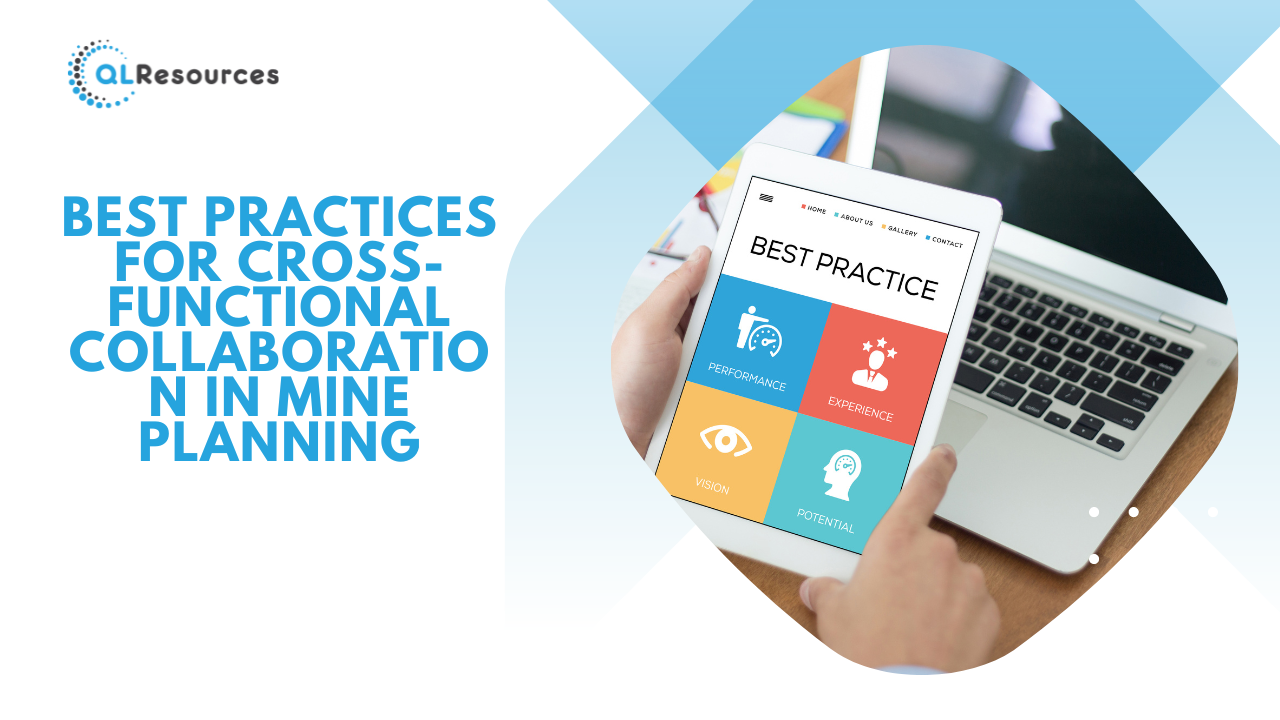
Mine planning is a multifaceted process that involves coordination among various departments and stakeholders, including geology, engineering, operations, and environmental management. Effective cross-functional collaboration is essential for optimising mine plans, maximising resource utilisation, and ensuring operational efficiency. This article explores best practices for fostering collaboration among different departments in mine planning processes, highlighting strategies to streamline communication, align objectives, and leverage collective expertise for successful outcomes.
- Establish Clear Communication Channels:
- Clear and open communication channels are essential for effective cross-functional collaboration in mine planning. Establish regular meetings, workshops, and communication platforms where representatives from different departments can share updates, discuss challenges, and align on priorities. Utilise tools such as project management software, collaborative documents, and video conferencing to facilitate seamless communication and information sharing.
- Define Roles and Responsibilities:
- Clearly define roles and responsibilities for each department involved in mine planning to avoid duplication of efforts and ensure accountability. Establish clear guidelines for decision-making, approval processes, and escalation procedures to streamline workflow and resolve conflicts efficiently. Encourage collaboration by fostering a culture of mutual respect, trust, and transparency among team members.
- Encourage Cross-Training and Knowledge Sharing:
- Encourage cross-training and knowledge sharing among team members to build a shared understanding of each department’s role and expertise. Provide opportunities for employees to participate in interdisciplinary training programs, workshops, and site visits to gain insights into different aspects of mine planning. Foster a culture of continuous learning and collaboration to leverage diverse perspectives and expertise across departments.
- Align Objectives and Key Performance Indicators (KPIs):
- Align departmental objectives and key performance indicators (KPIs) with overarching mine planning goals to ensure alignment and synergy across functions. Establish common metrics and performance targets that reflect the collective priorities and objectives of all stakeholders involved in mine planning. Regularly review and assess progress against KPIs to identify areas for improvement and realignment.
- Utilise Integrated Data Management Systems:
- Implement integrated data management systems and software platforms that facilitate the seamless exchange of information and data among different departments. Centralise data storage and documentation to ensure accessibility and visibility across functions. Leverage advanced data analytics and visualisation tools to analyse complex datasets and derive actionable insights for informed decision-making.
- Facilitate Collaborative Workshops and Design Charrettes:
- Organise collaborative workshops, design charrettes, and brainstorming sessions to foster creativity, innovation, and consensus-building among cross-functional teams. Encourage active participation from representatives of each department to leverage diverse perspectives and generate creative solutions to complex mine planning challenges. Use facilitated exercises and design thinking methodologies to promote collaboration and teamwork.
- Establish Cross-Functional Review and Feedback Mechanisms:
- Establish cross-functional review and feedback mechanisms to ensure that mine plans are rigorously evaluated from multiple perspectives before finalisation. Conduct regular design reviews, peer assessments, and technical reviews involving representatives from different departments to identify potential gaps, risks, and opportunities early in the planning process. Encourage constructive feedback and collaborative problem-solving to address challenges and optimise mine plans iteratively.
- Promote a Culture of Collaboration and Continuous Improvement:
- Promote a culture of collaboration, teamwork, and continuous improvement by recognising and rewarding collaborative behaviors and contributions. Encourage open dialogue, constructive feedback, and knowledge sharing among team members to foster a culture of continuous learning and innovation. Celebrate successes and milestones achieved through cross-functional collaboration to reinforce the importance of teamwork and collective achievement.
Conclusion: Cross-functional collaboration is essential for optimising mine planning processes and achieving successful outcomes in the mining industry. By implementing best practices such as clear communication, defined roles and responsibilities, cross-training, and integrated data management, mining companies can leverage the collective expertise and perspectives of different departments to develop robust mine plans that maximise resource utilisation, minimise risks, and drive operational excellence. By fostering a culture of collaboration and continuous improvement, mining companies can enhance efficiency, innovation, and resilience in their mine planning practices, ultimately contributing to long-term success and sustainability in the industry.
© 2024 QLResources All rights reserved.